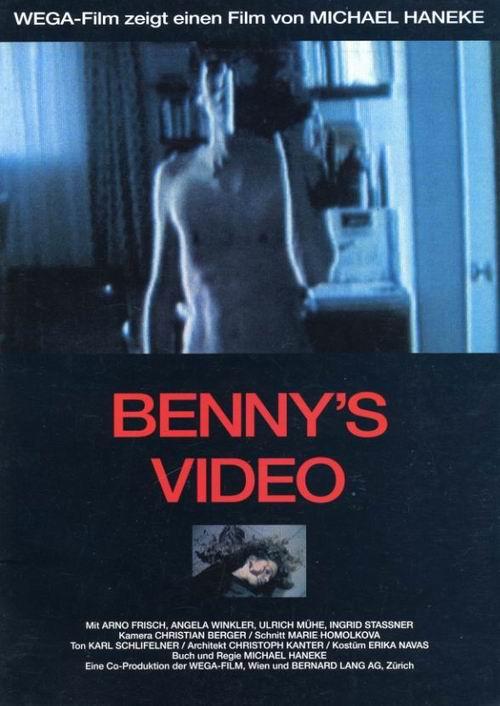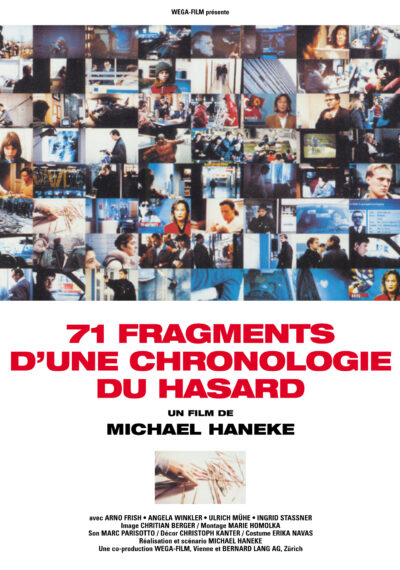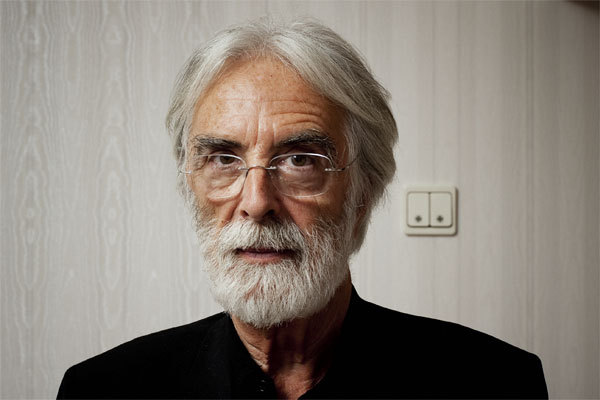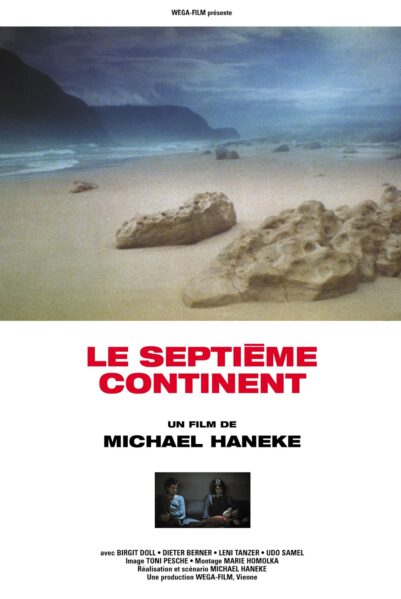For international filmmakers thematic trilogies are, it seems, a necessity. The idea of linked films excites critics and festival programmers enormously, and appears to be a great way to elicit support from recalcitrant governments. Such was the case with Georgia’s Tengiz Abuladze (1924-1994), who by linking together his films THE PLEA/Vedreba (1967), THE WISHING TREE/Natvris khe (1976) and REPENTENCE/Monanieba (1984) was assured of approval by Soviet authorities (despite the fact that the three films have no direct linkage), and won Abuladze the prestigious Lenin Prize.
The idea of linked films excites critics and festival programmers enormously, and appears to be a great way to elicit support from recalcitrant governments.
A trilogy can also lead to international distribution. The ALL NIGHT LONG/Ooru naito rongu trio (1992-96) of Japan’s Katsuya Matsumura, consisting of three shot-on-video depictions of psychosis and depravity, has received a fair amount of attention in America, even though Matsumura’s other efforts, which include similarly oriented sickies like CONCRETE-ENCASED HIGH SCHOOL GIRL MURDER CASE: BROKEN SEVENTEEN-YEAR-OLDS/Joshikôsei konkurîto-zume satsujin-jiken: Kowareta sebuntîn-tachi (1995) and DARK LOVE: RAPE/Dâku rabu: Rape (2008), have been largely ignored on these shores.
Then there’s Austria’s Michael Haneke, who made a self-designated “emotional glaciation” trilogy, consisting of THE SEVENTH CONTINENT/Der siebente Kontinent (see below), BENNY’S VIDEO (see below) and 71 FRAGMENTS OF A CHRONOLOGY OF CHANCE/71 Fragmente einer Chronologie des Zufalls (see below), during the years 1989-94. The highly professorial and refined Haneke was by that point a television veteran, and I’d argue that many of his TV projects, such as LEMMING (1979) and WHO WAS EDGAR ALLEN?/Wer war Edgar Allan? (1984), stand as interesting works. Yet as with Mr. Matsumura’s ALL NIGHT LONG films, it’s the trilogy that granted Haneke’s entry into the international film world and, as with Tengiz Abuladze’s threesome, won Haneke some prestigious awards.
LEMMING First Episode
Then there’s Austria’s Michael Haneke, who made a self-designated “emotional glaciation” trilogy, consisting of THE SEVENTH CONTINENT/Der siebente Kontinent (see below), BENNY’S VIDEO (see below) and 71 FRAGMENTS OF A CHRONOLOGY OF CHANCE/71 Fragmente einer Chronologie des Zufalls (see below), during the years 1989-94.
Not only did these films mark the emergence of a unique and vital auteur, but they had a rather sizeable impact on European cinema as a whole. Haneke’s ultra-austere, emotionally muted style has been widely imitated in European made films like GOODNIGHT MOMMY/Ich seh, Ich she (2014) and I, OLGA HEPNAROVA/Já, Olga Hepnarová (2016), to name but a couple examples.
THE SEVENTH CONTINENT, BENNY’S VIDEO and 71 FRAGMENTS are, strictly speaking, horror movies. Their suffocating anti-escapist brand of apprehension, designed to (in Haneke’s words) “Rape the audience into independence,” offers an entirely different, more reality based vibe than that evoked by FRIDAY THE 13th, but it is horror, just as the novels of the late Jack Ketchum were. Like Haneke, Ketchum was known to use actual crimes as inspiration, and (in certain of his novels) decry any type of conventional escapism. I’ve long believed Haneke would be the ideal adaptor of hereto unfilmed Ketchum tales like STRANGLEHOLD and RIGHT TO LIFE.
Haneke’s ultra-austere, emotionally muted style has been widely imitated in European made films…
THE SEVENTH CONTINENT marked a smashing, if shocking and unpleasant, feature debut. With influences that range from Rainer Werner Fassbinder’s WHY DOES HERR R. RUN AMOK?/Warum läuft Herr R. Amok (1970) to Robert Bresson’s THE DEVIL PROBABLY/Le diable probablement (1977), it’s the very definition of a “slow burn” drama, taken up largely with intimate depictions of mundane activities—shopping, pumping gas, punching cash registers, eating dinner, etc.—depicted in a severely muted color palette and performed by a seemingly contented middle class Austrian family.
THE SEVENTH CONTINENT Trailer
These folk—who include the officious businessman Georg (Dieter Berner), his wife Anna (Birgit Doll) and their young daughter Evi (Leni Tanzer)—and their horrific fate were inspired by an actual case involving a disaffected Austrian man with marital problems. The latter portion of that description was jettisoned by Haneke, who concentrates wholly on the shiny surfaces of his images, under which, as is repeatedly made clear, a great deal of trauma resides. This point is made explicit in two crucial car wash sequences, in which (as in other nineties-era car wash depictions in CRASH and THE SWEET HEREAFTER) a vehicle’s outer surfaces are washed clean while the dirt within festers.
Seemingly unmotivated depictions of a placid seashore, inspired by a poster glimpsed early on showing the Australian coast, are included in the film’s visual onslaught. It would appear that our protagonists plan to travel there to escape the suffocating urban hellscape in which they’re imprisoned, but eventually it becomes clear that they’re pondering an entirely different form of escape.
Following a “last supper” of luxury food items the family methodically defaces and destroys their every possession (but for the TV set, which plays throughout the melee) in an agonizing half-hour sequence done with the same suffocating intimacy of the earlier scenes, en route to a mass suicide. A note written by George to his parents claims that Evi is okay with dying, but her actions suggest otherwise.
Yes, screamingly unpleasant this film most definitely is, and that seems to have been the whole point. Whether Haneke was morally justified in rubbing our noses (however artfully) in such ugliness remains an open question.
Haneke has been known to grow quite offended when asked if the bleakness of THE SEVENTH CONTINENT and its follow-ups were inspired by the actions of Germany in the early half of the Twentieth Century, but I think it’s a fair question (as evidenced by his 2009 film THE WHITE RIBBON/Das weiße Band – Eine deutsche Kindergeschichte, which explored Germany in the years leading up to World War 1). Quite simply, no other modern filmmaker has an obsession with violence matching that of Michael Haneke.
Quite simply, no other modern filmmaker has an obsession with violence matching that of Michael Haneke.

See BENNY’S VIDEO. Its opening sequence in particular offers a profoundly upsetting depiction of violence and psychosis, in the form of video footage of a pig killed in close-up via a bolt gun through its head, an image that is then rewound and shown again in slow motion. It may be the single harshest opening to a non-exploitation film in history, and offers a stern warning to viewers: if you flinch here you probably won’t want to view the rest of the flick.
BENNY’S VIDEO, Trailer
The video, we learn, is being watched by Benny (Arno Frisch), a 14 year old boy who lives with his largely absent parents (Ulrich Mühe and THE TIN DRUM’s Angela Winkler) in a house bequeathed by a local farmer. One day, after renting THE TOXIC AVENGER (1984) from a local video store, Benny invites a girl (Ingrid Stassner) to his home and, in a profoundly gut-wrenching sequence that demonstrates Haneke’s cinematic mastery in its purest form, uses the bolt gun seen in the opening to kill her, and then (it’s implied) violates her corpse—because, as Benny later claims, “I wanted to know what it felt like.” The violence, viewed entirely through the eye of Benny’s video camera, takes place largely offscreen, but we’re shown just enough to induce permanent nightmares.
Of course Benny can’t help but show his parents the video, and in so doing proves that his psychosis was very likely inherited. It’s hard to tell if his mother’s reaction upon viewing the footage is shock or fascination, while his father elects to send mother and son away on a trip to Egypt while he disposes of the girl’s body.
The film is impressive, but lacks the rigor and focus of its predecessor. Here Haneke has too many points to make, with the dehumanizing effects of urban life once again being a major issue (with cash register close-ups that feel like, and probably were, homages to THE SEVENTH CONTINENT), along with the corrosive effects of the media (the American media in particular), the dangers of absentee parenting and (in the Egypt-set sequences) the clash between first and third world values.
The title, FYI, is presented in English, despite BENNY’S VIDEO being an Austrian language production. This is something Haneke would do again with 1997’s FUNNY GAMES (which featured BENNY’S Arno Frisch), the reason being that he wanted to make absolutely sure we know it’s American culture that he considers the major corrupting influence.
…he wanted to make absolutely sure we know it’s American culture that he considers the major corrupting influence.

The final entry in this trilogy is ostensibly 71 FRAGMENTS OF A CHRONOLOGY OF CHANCE, although it would probably work better as part of a twosome with the Haneke film that immediately preceded it: the experimental 1991 documentary OBITUARY FOR A MURDERER/Nachruf für einen Mörder. That project consists entirely of Austrian television captures about the events of September 8, 1990, a day when, as a textual preamble informs us, a 21-year-old Austrian man went on a shooting spree, killing six people (including his parents, two police officers and himself) and critically wounding four more. Contained is a televised discussion about the incident that occurred three days after the fact, interspaced with snippets of programs broadcast the same day, to show that even in the face of such unspeakable horror the expected televised insipidness was excreted on schedule.
71 FRAGMENTS OF A CHRONOLOGY OF CHANCE, Complete Film
TV snippets are also ever-present in 71 FRAGMENTS OF A CHRONOLOGY OF CHANCE, which purports to examine a mass shooting by one Maximilian B. (Lukas Miko) that occurred in an Austrian bank on December 12, 1993, presented in 71 “fragments.” This means 71 fixed camera scenes, separated Jim Jarmusch-like by cuts to black, whose runtimes (some are short and some quite long) and precise relation to the shooting vary. The overall gambit is similar to that of the 1976 TV movie SMASH-UP ON INTERSTATE 5, showing in reverse chronology what happened to the participants in the days leading up to the tragedy.
Haneke imparts these 71 accounts in his by-now familiar manner, with muted colors and an emphasis on shiny surfaces. Ambiguity is once again a major factor, with an elderly bank worker (Otto Grünmandl) in a nine minute telephone altercation with his daughter, whose responses we don’t hear, meaning we never learn precisely what the argument is about. There’s also an extended scene in which Maximilian plays ping pong against a machine, a downright agonizing bit of film whose annoyance, according to Haneke, was entirely intentional: “The secret is to find the right length in imagining how I as a viewer would react to that. You say okay, then you get bored, then you get angry, you say cut then after a certain time you start to watch it and feel its pulse. That’s the right length, and it’s hard to find…”
The bank shooting, when it finally occurs, is a bit of a let-down, lacking the transcendent power of the cavalcade of destruction that climaxes THE SEVENTH CONTINENT or the bolt gun killing of BENNY’S VIDEO. Ultimately the film’s most impacting scene is also one of its most subtle: a bit in which a bank guard is seen eating dinner with his wife, and breaks the silence by saying “I love you”; she questions his motives for making such a statement, to which he responds by slapping her face.
Subsequent Michael Haneke films have included FUNNY GAMES (1997) and its 2007 remake, which explore serial murder; THE PIANO TEACHER/La pianiste (2001), about sexual obsession; and TIME OF THE WOLF/Le temps du loup (2003), about the apocalypse. A bunch of films, in short, that have continued, and arguably furthered, the concerns of the Emotional Glaciation Trilogy. But again, we like trilogies, so here it is.


